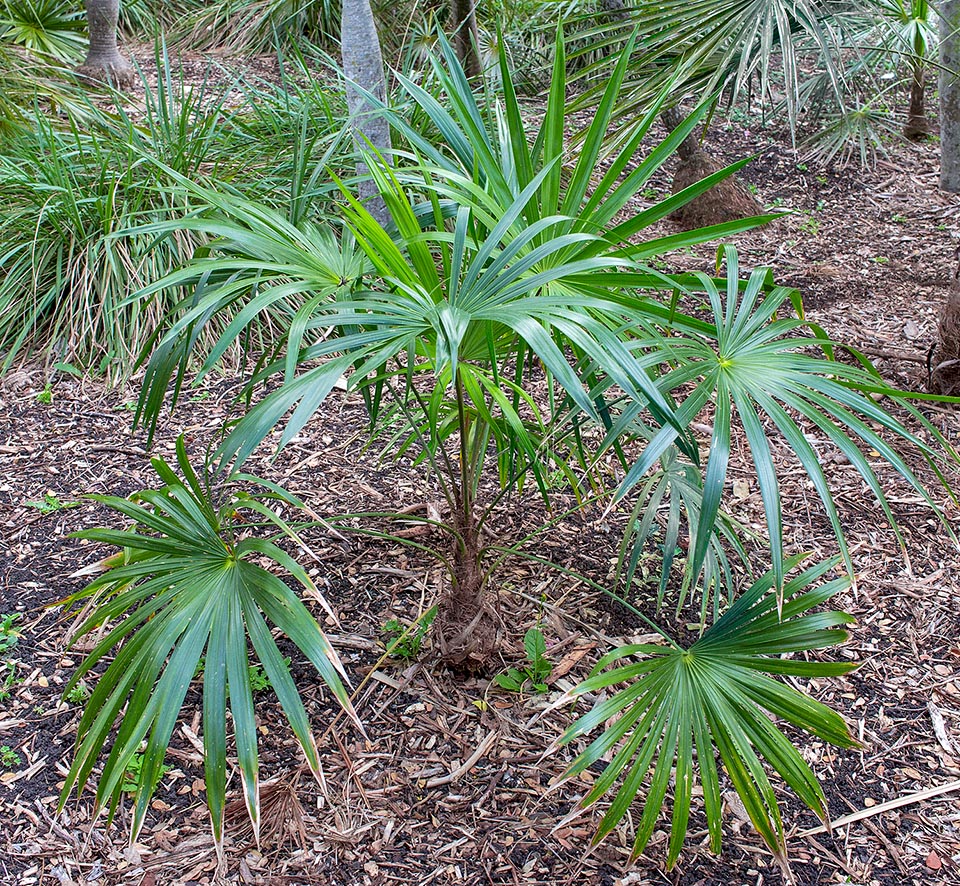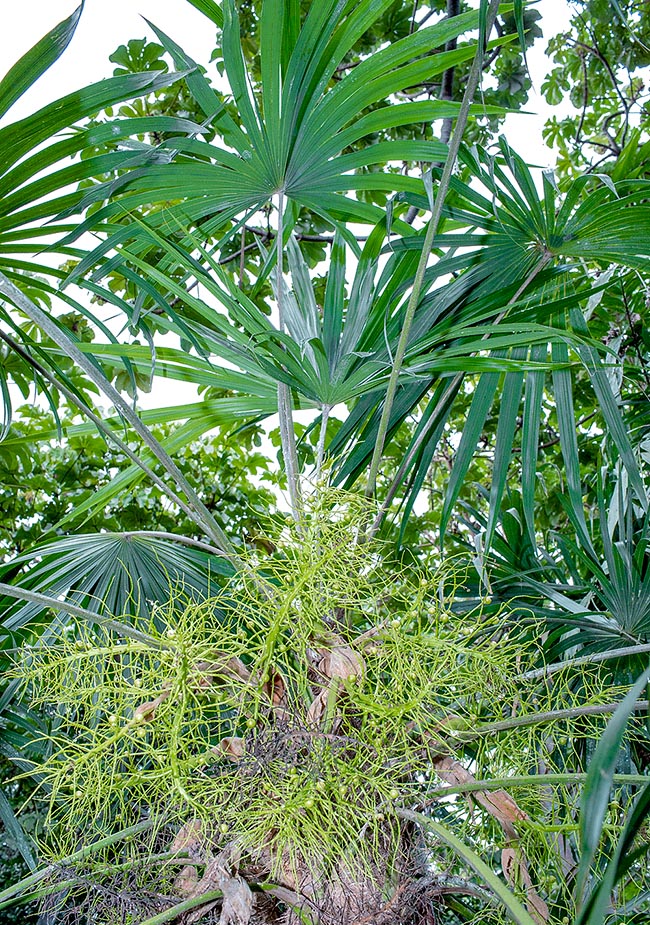Family : Arecaceae

Text © Pietro Puccio

English translation by Mario Beltramini

Young specimen of Schippia concolor. Little cultivated in the gardens due to its slow growth, well adapts to the cultivation in pot © Giuseppe Mazza
The species is native to Belize and northern Guatemala where it lives in the humid as well as in the dry forests up to about 500 m of altitude.
The genus, monotypic, is dedicated to the Australian botanist and collector William Augustus Schipp (1891-1967) who discovered the species in Belize; the specific name is the Latin adjective “cóncolor, oris” = of the same color, of uniform color, with reference to the color almost equal of both sides of the leaves.
Common names: mountain palmetto, mountain pimento, silver pimento, silver thatch (inglese).

Endangered species in Belize and Guatemala, has whitish globose 2,5 cm fruits © Giuseppe Mazza
The Schippia concolor Burret (1933) is an unarmed species with solitary stem, up to 10 m tall and 8-10 cm of diameter, covered by the persistent dry leaves in the youngest part, wrinkly, longitudinally fissured and with the prominent annular scars of the fallen leaves in the oldest part.
The leaves, on an about up to 2 m long petiole and 1 cm broad, are palmate, induplicate, almost circular, of about 90 cm of diameter, divided in 20-32 linear-lanceolate segments, about 3 cm broad, with briefly bifid acuminate apex, merged at the base per about 1/3 of their length, of glossy intense color above, slightly paler below. Foliar sheath covered by pale brown tomentum with margins that come apart forming a fibrous mass that wraps the stem.
Inflorescences between the leaves, about 60 cm long, tomentose, of white color, with two, rarely three, orders of ramifications, and several rachillae bearing solitary pedicellate flowers spirally arranged, hermaphroditic at the base, with 6 stamina and ovoid monocarpellary gynaeceum, and male at the apex. Globose fruits of 2,5 cm of diameter of whitish color when ripe containing only one globose seed of about 2 cm of diameter.
It reproduces by seed, previously kept in water for 3 days, in draining loam maintained humid at the temperature of 28-30 °C, with germination times starting from 1-3 months.
Species with elegant posture, but with particularly slow growth, and probably for this reason little cultivated, suitable due to its reduced dimensions to small shady gardens, even if it can bear the full sun. Utilizable in the tropical, subtropical climate regions and marginally in the warm temperate ones, where it can resist exceptional and short lasting temperatures up to -2/-3 °C, with possible damage to the foliage. Requires fertile soils, slightly acidic to slightly alkaline, draining, maintained almost constantly humid, even if bearing when adult short periods of dry, but with even slower growth. Can be successfully cultivated in pot for the decoration of inner spaces, adapting to situations not particularly luminous, in draining loam rich of organic substance, with temperatures preferably not under the 16 °C.
Due to the progressive reduction of its habitat, due to the expansion of the agriculture, it has been inscribed in the red list of the IUCN (International Union for the Conservation of Nature) as “vulnerable” (species under risk of extinction in nature).
→ For general notions about ARECACEAE please click here.
